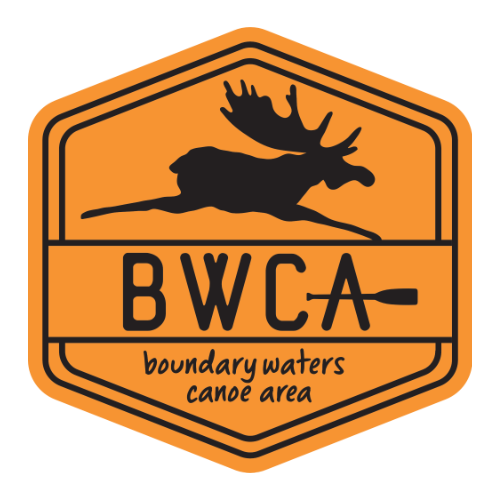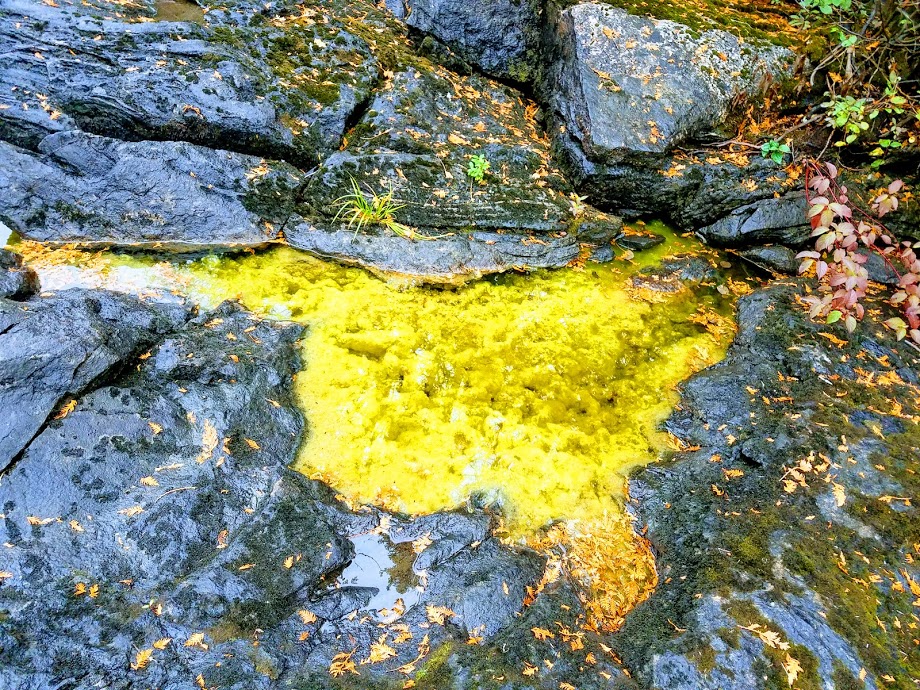Drowning River
by user0317
Trip Type:
Paddling Canoe
Entry Date:
09/21/2018
Entry & Exit Point:
Other
Number of Days:
8
Group Size:
1
Discuss Trip:
View Discussion Thread (15 messages)
Day 5 of 8
Tuesday, September 25, 2018
Travelled 5.5 miles from Jackpine Rapids to Tincan Rapids Another rainy start this morning, so I laid in my hammock far longer than I wanted to. After making pancakes and coffee for breakfast, I went and fished the rapids for a little while. I wasn’t planning on travelling far today, and I only had 2 portages to complete today, with my next camp being on the 2nd portage (Tincan Rapids). At about noon I decided to start packing up, and hit the water a little after 1pm. I did a fair amount of drifting and fishing on the way to Tincan. The nature of the river changed quite a bit and I was running into a lot more swifts and small rapids. I don’t think that any of these would have been a problem in higher water, but at current water levels I was hitting a lot of rocks, and having to hop in the river and do a lot of lining and dragging. Between the clouds reflecting off the river, and the raindrops hitting the river’s surface, it was hard to see into the river to look for rocks and obstacles. Most of the river was shallow and the current was reasonable, so there wasn’t much of a risk to injuring myself, but I certainly didn’t want to tear through the Kevlar in my boat back here. The portage labeled ‘P9’ on the Greenstone map is used to bypass some rapids and a logjam. Most areas I canoe do not have portage signs, so you just portage when you need to. In an area like the BWCA or Quetico, these portages are well mapped and in predictable places, so you merely have to follow a map and keep an eye out for them. In other places you just get out when and where you need to, hoping there is some sort of existing portage to use, and making a path for yourself if there isn’t. At any rate, I had gotten accustomed to just watching out for the signs on the drowning, so when I saw P9’s I got out of the canoe and unloaded it out of habit. I carried my stuff across and then noticed there was no log jam and the water was easily run at these levels. I paddled the canoe down to my stuff at the other end of the portage, feeling a little foolish for portaging around nothing. Back in the canoe, I continued to bump my way down the Drowning, keeping an eye out for Tincan Rapids and its portage. I expected it to be closer to P9 then it was. After a while, I saw a portage sign, and got out, I was a bit cold from being in the river so much, and I was very much looking forward to setting up camp and getting a fire going. The other named portages on this route (High Hill, Jackpine, etc...) had their names on the portage sign, but this sign for Tincan’s portage did not. I also thought it started well before the rapids, but this can vary a lot with different water levels. I began to carry my stuff down the portage, which followed close to the river, but was fairly rough. I’ve followed better moose trails! About 100m down it widened out and the trail took a right angle and improved dramatically. There I noticed another sign labelled ‘Tincan Portage’. Apparently I had gotten out at an extension to the portage for high water conditions! The campsite at Tincan Rapids wasn’t much to look at, but it would suffice for the night, particularly since I got there about an hour before dark. I hurriedly setup camp and made some coffee and a dinner of Spanish rice and fish. I warmed up by the campfire a bit after dinner but was chased into the hammock by rain.
Travelled 5.5 miles from Jackpine Rapids to Tincan Rapids Another rainy start this morning, so I laid in my hammock far longer than I wanted to. After making pancakes and coffee for breakfast, I went and fished the rapids for a little while. I wasn’t planning on travelling far today, and I only had 2 portages to complete today, with my next camp being on the 2nd portage (Tincan Rapids). At about noon I decided to start packing up, and hit the water a little after 1pm. I did a fair amount of drifting and fishing on the way to Tincan. The nature of the river changed quite a bit and I was running into a lot more swifts and small rapids. I don’t think that any of these would have been a problem in higher water, but at current water levels I was hitting a lot of rocks, and having to hop in the river and do a lot of lining and dragging. Between the clouds reflecting off the river, and the raindrops hitting the river’s surface, it was hard to see into the river to look for rocks and obstacles. Most of the river was shallow and the current was reasonable, so there wasn’t much of a risk to injuring myself, but I certainly didn’t want to tear through the Kevlar in my boat back here. The portage labeled ‘P9’ on the Greenstone map is used to bypass some rapids and a logjam. Most areas I canoe do not have portage signs, so you just portage when you need to. In an area like the BWCA or Quetico, these portages are well mapped and in predictable places, so you merely have to follow a map and keep an eye out for them. In other places you just get out when and where you need to, hoping there is some sort of existing portage to use, and making a path for yourself if there isn’t. At any rate, I had gotten accustomed to just watching out for the signs on the drowning, so when I saw P9’s I got out of the canoe and unloaded it out of habit. I carried my stuff across and then noticed there was no log jam and the water was easily run at these levels. I paddled the canoe down to my stuff at the other end of the portage, feeling a little foolish for portaging around nothing. Back in the canoe, I continued to bump my way down the Drowning, keeping an eye out for Tincan Rapids and its portage. I expected it to be closer to P9 then it was. After a while, I saw a portage sign, and got out, I was a bit cold from being in the river so much, and I was very much looking forward to setting up camp and getting a fire going. The other named portages on this route (High Hill, Jackpine, etc...) had their names on the portage sign, but this sign for Tincan’s portage did not. I also thought it started well before the rapids, but this can vary a lot with different water levels. I began to carry my stuff down the portage, which followed close to the river, but was fairly rough. I’ve followed better moose trails! About 100m down it widened out and the trail took a right angle and improved dramatically. There I noticed another sign labelled ‘Tincan Portage’. Apparently I had gotten out at an extension to the portage for high water conditions! The campsite at Tincan Rapids wasn’t much to look at, but it would suffice for the night, particularly since I got there about an hour before dark. I hurriedly setup camp and made some coffee and a dinner of Spanish rice and fish. I warmed up by the campfire a bit after dinner but was chased into the hammock by rain.







 Donate - BWCA.com
Donate - BWCA.com